FHWA National Dialogue on Highway Automation
Mesa, AZ
October 24-25, 2018
PowerPoint Presentation Version [PDF 942KB]
You may need the Adobe® Reader® to view the PDFs on this page.
Contact Information: HighwayAutomation@dot.gov
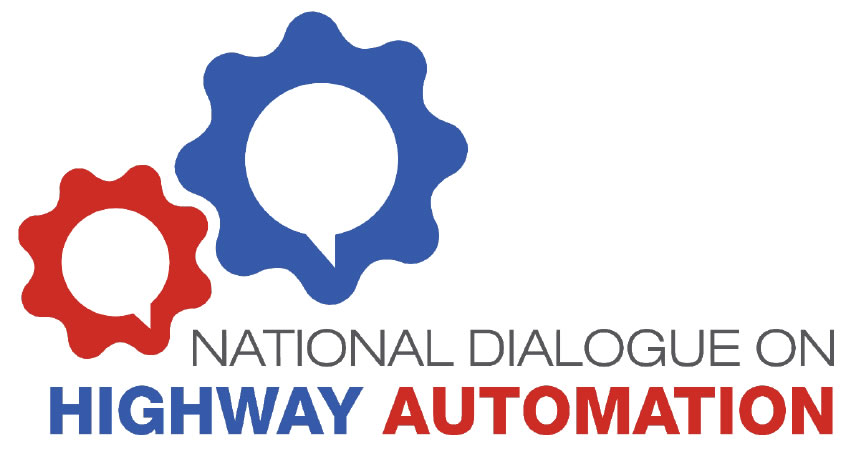
Slide 1. FHWA National Dialogue on Highway Automation
Operations
Delta Hotels Phoenix Mesa, Mesa, AZ
October 24-25, 2018
Slide 2. Levels of Automation

Slide 3. USDOT Modal Agencies and Roles

Slide 4. FHWA Released Request for Information (RFI) in March 2018
Select Themes:
- Greater Uniformity and Quality in road markings and traffic control devices would enable
automation.
- FHWA should take a Leadership role in convening stakeholders to encourage collaboration.
- Certain Data Elements about the roadway environment are useful for industry, State, and local
DOTs to share and could improve automation operations.
- Conducting Pilots and supporting pilot testing are important for facilitating learning and
collaboration.
- Uncertainty in infrastructure investment and allocation of limited resources are key concerns
for State and local agencies.
Slide 5. AV 3.0 Released in October 2018
- Automated Vehicles 3.0 provides:
- New multimodal safety guidance
- Clarifies policy and roles
- Outlines how to work with U.S. DOT as automation technology evolves
- U.S. DOT will use the automation principles and strategies defined in figure below

Slide 6. AV 3.0 ––– FHWA's Authorities Over Traffic Control Devices
- U.S. DOT recognizes that the quality and uniformity of road markings, signage, and other traffic control devices support safe and efficient driving by both human drivers and automated vehicles.
- The MUTCD is recognized as the national standard for all traffic control devices installed on any street, highway, bikeway, or private road open to public travel.
- FHWA will pursue an update to the 2009 MUTCD that will take into consideration these new technologies and other needs.
Slide 7. AV 3.0 ––– Considerations for Infrastructure Owners and Operators (IOO)
U.S. DOT provides the following considerations for infrastructure owners and operators, including State DOTs, metropolitan planning organizations (MPOs), and local agencies.
- Support safe testing and operations of automated vehicles on public roadways.
- Learn from testing and pilots to support highway system readiness.
- Build organizational capacity to prepare for automated vehicles in communities.
- Identify data needs and opportunities to exchange data.
- Collaborate with stakeholders to review the existing Uniform Vehicle Code (UVC).
- Support scenario development and transportation planning for automation.
Slide 8. What Is Data for AV Integration?
- Access to data is a limiting factor for AV deployment across all modes.
- Data exchanges can help increase access to data across traditional silos.
- U.S. DOT is using our convening power to understand critical needs for data exchange and the appropriate Federal role to enable them, using a common language.
For more information, visit https://www.transportation.gov/AV/Data and see the draft Framework for Data for AV Integration.
Slide. 9 The National Dialogue on Highway Automation
Slide 10. What Are Desired Outcomes?
FHWA may use inputs to:
- Assess national issues and priorities.
- Develop guidance, best practices, standards.
- Support necessary research.
- Adapt programs and policies.
- Create a national community or coalition.
Slide 11. Workshop Schedule
Month |
Event |
Location |
June 7 |
National Dialogue Launch Workshop |
Detroit, MI |
June 26–27 |
National Workshop 1: Planning and Policy |
Philadelphia, PA |
July 12 |
Automated Vehicle Symposium
FMCSA–FHWA Truck Automation Listening Session |
San Francisco, CA |
August 1–2 |
National Workshop 2: Digital Infrastructure and Data |
Seattle, WA |
September 5–6 |
National Workshop 3: Freight |
Chicago, IL |
October 24–25 |
National Workshop 4: Operations |
Mesa (Phoenix), AZ |
Nov. 14–15 |
National Workshop 5: Infrastructure Design and Safety |
Dallas, Texas |
Slide 12. Themes: Launch Workshop
- FHWA has a clear role as a facilitator.
- A national vision for automation will help clarify goals.
- Clear communication about the technology helps to encourage public acceptance.
- A lack of consistency (i.e., traffic control devices, policies) can hinder adoption.
- Information sharing is important for enabling automated vehicles.
- There will be a transition period of a mixed-vehicle fleet, which will require interoperability.
Slide 13. Themes: Policy and Planning Workshop
- The transportation planning process may need to evolve to address uncertainty of AV impacts (e.g., congestion, land use).
- Infrastructure investment and funding to raise overall condition enables not only automation, but all road users.
- Clearly defining roles and goals will help policy development.
- State and local agencies need education, resources, and guidance to support organizational readiness.
Slide 14. Themes: Data/Digital Infrastructure Workshop
- Data exchange can accelerate safe integration of AVs (see next slide).
- Important to achieve data standardization where useful and tangible.
- Lifecycle management and upkeep of data are emerging issues.
- Further clarity needed around digital mapping ––– who is building, level of detail needed, Federal role.
- Above activities may necessitate development and linkage of systems and technologies.
Slide 15. Themes: Freight Workshop
- Safety and efficiency are key priorities for the freight industry and its customers.
- How data can be used to enhance freight operations and in context of specific parts of a trip is important (e.g., last–mile delivery, highways, etc.).
- May be useful to evaluate physical infrastructure design needs that may include designated truck lanes, impacts/changes to interchanges, and space at intermodal facilities for mode transfer (rail to truck).
- Consider research and engineering studies to determine loading patterns of automated (freight) vehicles and their impacts on the road infrastructure.
Slide 16. Operations
Slide 17. What Is TSMO?
-
Transportation Systems Management and Operations
- "[A set of] integrated strategies to optimize the performance of existing infrastructure through the implementation of multimodal and intermodal, cross–jurisdictional systems, services, and projects." (MAP–21, Section 1103, a, 30)
"Integrated strategies" means:
- Regional integration
- Intermodal coordination
- Interagency collaboration
- Technical integration
Slide 18. Cooperative Automation – Research Program
Safely improve the operational efficiency and maximize capacity of our Nation's urban and rural roadways
Research Focused on Arterials and Freeways
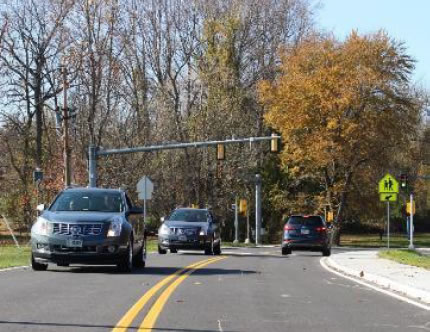
Source: FHWA
Reduce fuel consumption at intersections by 20%.
|
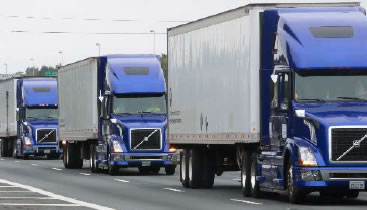
Source: FHWA
Fuel savings of 10%.
|
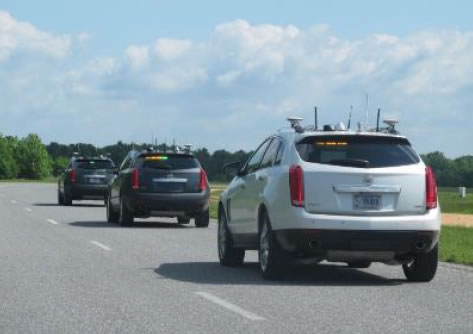
Source: FHWA
Double capacity of existing lanes.
|
Slide 19. Cooperative Automation Research Mobility Applications Software Architecture

A platform developed in the open using agile software development process to collaborate with stakeholder community
Slide 20. Cooperative Automation Use Cases – TSMO Proof of Concept Testing and Evaluation

Slide 21. Potential Challenges for Discussion
- Priority issues or challenges for traffic operations.
- Identify use cases or operational scenarios involving AVs that need further attention.
- Near–term operations challenges, especially as IOOs are interacting with AV pilots, demonstrations, and deployments.
- Ensuring the safety of emergency responders and others working in the roadway.
- Preparing for managing system efficiency while AVs operate on roadways.
- Information collection/exchange/sharing to support AV operations.
- FHWA roles in supporting IOOs, industry, and the transportation community to support safe and efficient AV operations, as part of the broader transportation network.
Slide 22. Contact:
HighwayAutomation@dot.gov
Slide 23. Glossary of Terms
- INFRASTRUCTURE OWNER OR OPERATOR (IOO): Generally refers to entities responsible for the design, build, maintenance and operation of the roadway infrastructure. For example, this would include State and local departments of transportation.
- OPERATIONAL DESIGN DOMAIN (ODD): The operating conditions under which a given driving automation system or feature is specifically designed to function, which includes but is not limited to, environmental, geographical, and time–of–day restrictions, and/or the presence or absence of certain traffic or roadway characteristics.
- ORIGINAL EQUIPMENT MANUFACTURER (OEM): Refers to the original producer or manufacturer of a vehicle's components. The term is regularly used to describe vehicle or automotive manufacturers.
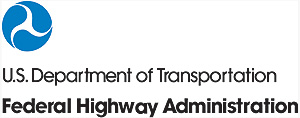
|





